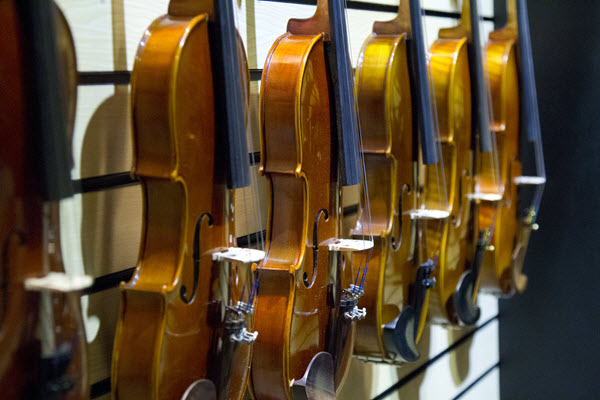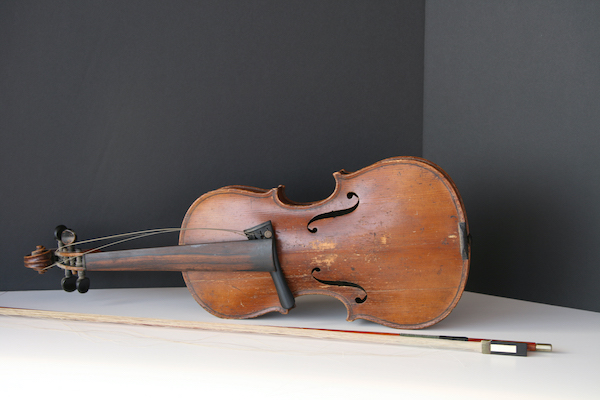Looking for a Student Violin? Here Are Six Important Questions to Ask
Put your child on the road to success with their first violin.
You’ve decided to start your child out on the violin. Congratulations! The violin is a great choice for young players, since it builds discipline and confidence, as well as setting them up for a lifetime of musical enjoyment.
If you’ve begun looking for an instrument for your child, that search may well have raised more questions than answers. How much does an instrument cost? Should we rent, or buy? What are all these instrument brands that I haven’t heard of before? What do we really need to get started?
Fortunately, there’s a lot of information on the subject to be found online in the form of articles by knowledgeable bloggers and experienced retailers. But to save you a bit of time, here’s a list of the top questions you really need to ask in order to get started.
1. Is It Well-Made?
Is the violin going to last? A well-made instrument will be skillfully crafted by a well-known maker or manufacturer; this assures consistency and quality assurance. It should be made with durable spruce and maple wood materials for resonance and resilience, with a high-quality finish containing no unsightly smudges or distracting odors. In addition, it should be fitted with a fingerboard that will stand up to frequent use, along with parts made with high-quality materials like ebony pegs and fingerboard.
2. Is It Easy to Play?
Can your child play the instrument easily and effectively? A properly set-up violin — one that has a properly cut bridge and parts that turn and function well, and that has been checked and adjusted by an expert — makes it easier for your child to make progress, and more quickly. One thing you don’t want is for your child is to get discouraged when parts don’t work, or when a poor set-up is making them struggle with playing in tune or with bowing. Think of it as riding a tuned-up bicycle versus riding one that’s been sitting around the garage for a long time.
3. Is the Manufacturer Socially Responsible and Eco-Friendly?
What is this instrument’s impact on the environment? This may seem like an unusual question when it comes to musical instruments, but it’s increasingly important in today’s manufacturing landscape. So ask yourself these questions: Does the brand that you’re choosing follow environmentally-friendly manufacturing and design processes? Do they source materials responsibly and ethically? Find out how Yamaha does it here.
4. Is It the Right Size?
Is your child straining to hold the violin? Make sure you’re selecting an instrument that your child can actually play comfortably. You want to avoid any unnecessary discomfort, which can lead to a child growing frustrated and not wanting to continue. Take a measurement from your child’s neck to roughly the center of their palm, with their arm extended. It’s fairly easy to make your own measuring stick, or you can ask a music store to measure your child; Yamaha provides a “Find Your Fit” ruler to authorized dealers.
5. Does It Sound Good?
Are you hearing a thin, muffled or scratchy tone, or a tone that is clear and solid? If you have the opportunity to hear the violin before you purchase it, have someone at the store play it for you; alternatively, have your child’s teacher play it for you. Listen primarily for clarity, warmth and the instruments’ ability to project. Also ask about quality strings — one of the things you can do to improve the sound of a student instrument is to upgrade the strings to a name brand like D’Addario or Thomastik-Infeld. If the instrument sounds good, your child will be able to hear themselves more clearly and will enjoy making music even more.
6. Do You Trust the Brand?
Have you heard of it before? There are a dizzying number of labels, brands and names when it comes to beginner violins. Most instruments are imported from traditional violin-making countries throughout Asia and Eastern Europe, and some are adjusted or finished locally. Be aware that some of the European-sounding names that you see in labels may simply be a trademark instead of the name of a single maker; the instrument may have actually come from a workshop made up of numerous workers. The way to feel secure in your investment is to purchase from reputable retailers, and to select a brand that you know and trust — one that can be easily reached for customer questions, warranty and support.
Ready to answer a few questions that will help you decide which violin is best for your child? Let us help! Take the beginning violin quiz here.













